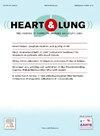在英国社区环境中使用人工智能外周水肿监测仪进行治疗决策的启示
IF 2.4
4区 医学
Q2 CARDIAC & CARDIOVASCULAR SYSTEMS
引用次数: 0
摘要
本研究评估了通过家庭医生在心力衰竭患者家中部署远程监控设备的意义。背景近年来,基层医疗机构的亲诊率下降带来了巨大的挑战,尤其是对于通常患有多种并发症的老年心力衰竭患者而言。一个值得关注的问题是,他们对体重增加、呼吸困难或双脚肿胀等症状变化缺乏认识。方法为英国 11 家初级医疗机构的 122 名患者配备了联网体重秤和人工智能监测设备,必要时还包括互联网加密狗。这些患者主要居住在社会经济贫困地区。研究的重点是设备的可接受性、使用率以及生成的警报对临床团队的影响。最初计划为期 6 个月,但大多数参与者选择延长人工智能设备的使用时间。数据可用性很高,使用统计显示:体重秤使用率(至少一次=60.7%;至少16天/月=5.7%)人工智能设备使用率(至少一次=100%;至少16天/月=71.3%)这表明人工智能设备的被动、自动性质可能会加强对传统上不参与的患者群体的数据收集。该设备的可接受性很高,几乎没有人拒绝接受,在对可用性调查做出答复的 40% 的参与者中,92% 的人可能会向朋友推荐该设备。警报管理并没有给全科医生团队造成太大负担,大多数警报都与心力衰竭或其他需要关注的危急情况(慢性阻塞性肺病加重、COVID-19 感染、淋巴水肿等)有关。尽管所选患者群体(代表该地区的高危心力衰竭人群)极具挑战性,但数据采集效果极佳,临床医生可以远程了解患者的健康状况。虽然这项调查不是随机对照试验(RCT),但轶事证据表明,在不显著增加全科医生工作量的情况下,可以及早发现问题。在更广泛地实施之前,进一步的研究至关重要。人工智能设备的关键试验预计将于2025年在美国进行。本文章由计算机程序翻译,如有差异,请以英文原文为准。
Insights from Implementing an AI-Enabled Peripheral Edema Monitor in UK-based Community Settings for Therapeutic Decision-Making
Purpose
This study evaluates the implications of deploying a telemonitoring device in the homes of patients with heart failure through family doctors.
Background
In recent years, a decline in in-person primary healthcare consultations has posed significant challenges, especially for elderly patients with heart failure, who often contend with multiple comorbidities. A notable concern is their lack of awareness regarding symptom changes, such as weight gain, breathlessness, or swelling of the feet.
Methods
A cohort of 122 patients from 11 primary care practices across the UK were equipped with connected weighing scales and an AI monitoring device, including an internet dongle when necessary. These patients primarily resided in socioeconomically deprived areas. The study focused on device acceptability, utilization rates, and the impact of generated alerts on clinical teams. Initially planned for a six-month duration, a majority of participants opted to extend their use of the AI-device.
Results
The deployment targeted high-risk patients with heart failure, characterized by complex health conditions and histories of non-adherence with self-checks.
Data availability was high, with usage statistics indicating:
Weighing scale usage (at least once = 60.7%; at least 16days/mth = 5.7%)
AI-device usage (at least once = 100%; at least 16days/mth = 71.3%)
This indicates the AI device's passive, automated nature may enhance data collection from traditionally disengaged patient groups. Acceptability was high, with few rejections and of the 40% of participants responding to usability surveys, 92% would likely recommend the device to a friend. Alert management did not significantly burden GP teams, with most alerts being relevant to heart failure or other critical conditions needing attention (COPD exacerbation, COVID-19 infection, lymphoedema etc.). GP feedback was notably positive, especially from practices with a dozen or more participating patients.
Conclusion
Despite the challenging chosen patient group (representative of the high-risk heart failure population in the area), data acquisition was excellent, allowing clinicians to get an overview of the patient's health status remotely. While the investigation was not a randomized controlled trial (RCT), anecdotal evidence suggests early problem identification without significantly increasing GP workload. Further research is essential before broader implementation. The pivotal trial for the AI-device is expected to take place in the US in 2025.
求助全文
通过发布文献求助,成功后即可免费获取论文全文。
去求助
来源期刊

Heart & Lung
医学-呼吸系统
CiteScore
4.60
自引率
3.60%
发文量
184
审稿时长
35 days
期刊介绍:
Heart & Lung: The Journal of Cardiopulmonary and Acute Care, the official publication of The American Association of Heart Failure Nurses, presents original, peer-reviewed articles on techniques, advances, investigations, and observations related to the care of patients with acute and critical illness and patients with chronic cardiac or pulmonary disorders.
The Journal''s acute care articles focus on the care of hospitalized patients, including those in the critical and acute care settings. Because most patients who are hospitalized in acute and critical care settings have chronic conditions, we are also interested in the chronically critically ill, the care of patients with chronic cardiopulmonary disorders, their rehabilitation, and disease prevention. The Journal''s heart failure articles focus on all aspects of the care of patients with this condition. Manuscripts that are relevant to populations across the human lifespan are welcome.
 求助内容:
求助内容: 应助结果提醒方式:
应助结果提醒方式:


